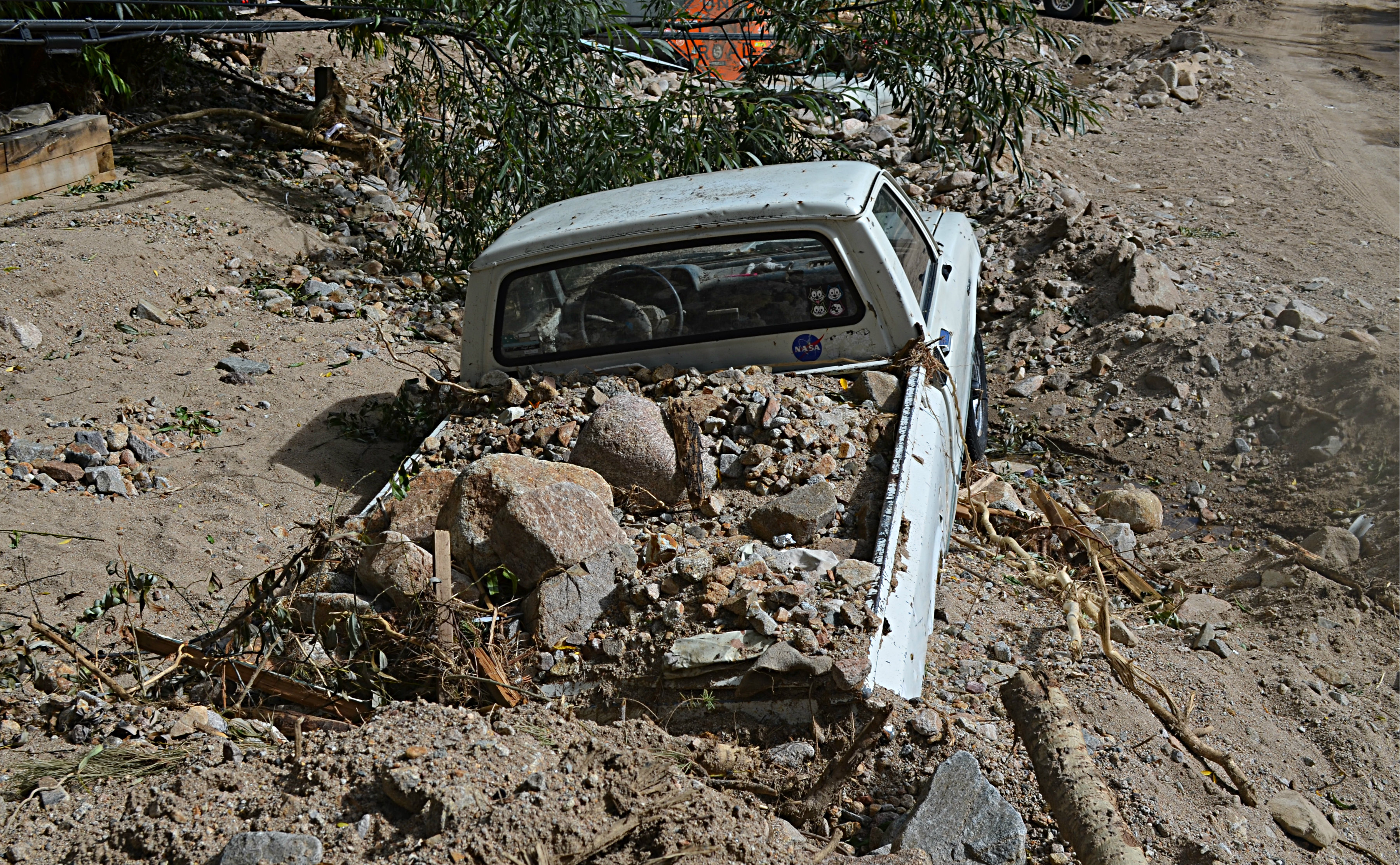
“All the water just flew out this way and around the barns,” Lookhart says, “and just flooded everybody to the east and north of me.”
Since the flood, Lookhart’s been stuck in a frustrating bureaucratic limbo. Because her berm also protected public infrastructure, like a county road, she wants government money to help rebuild it. But the fix could cost up to $1 million and, so far, she hasn’t even been able to figure out how to get the permits started
“I can’t even get somebody to come out and look at it,” Lookhart says.
Lookhart’s situation illustrates how complex the task of flood recovery is. Tens of thousands of Coloradans were affected by the 2013 disaster, and each victim has slightly different needs. The state hasn’t been able to address all those individual issues, but lawmakers have been looking to help where they can.
A bipartisan effort
Not long after the waters receded last fall, legislative leaders set up the Flood Disaster Study Committee, equally comprised of both Republican and Democratic members, to investigate what law changes might be needed.
Committee member Sen. Kevin Lundberg (R-Berthoud) says lawmakers have put aside partisan ties while working on the panel.
“Instead what we’re doing is we're finding the common ground issues that we can both agree on and we're making it so,” Lundberg says.
The seven bills the committee came up with cover a wide range of concerns. One would make it easier for ditch companies to move an intake point to a different spot on a stream or river. That policy is needed because many waterways changed course during the floods, leaving irrigation ditches high and dry.
Another bill aims to ease the financial burden on victims of the flood, and any future natural disaster, by refunding any taxes they paid that year on the destroyed property.
“You shouldn't have to pay property taxes on the home that's not there anymore,” says the bill’s Senate sponsor, Jeanne Nicholson (D-Black Hawk).
The committee is also championing a change to how local governments fund infrastructure repairs.
Under current law, communities can only pay for repair projects using money set aside in their road and bridge funds. That’s a problem for places like Boulder County, which holds a lot of its reserves in its general fund. One of the committee’s bills lets local governments draw on their main accounts to cover repairs after a disaster.
"[Without that fix] we just plain wouldn't have been able to move forward with repairing our roads in a timely fashion,” says Boulder County Commissioner Elise Jones. “Either that or we would have broken the law."
Legislators get high marks, but much still unaddressed
At a recent community meeting in Kersey, Colo., a couple dozen residents met at the town’s big new fire station to talk flood recovery with folks from an alphabet soup of government agencies. On the agenda: fence repair, mold, noxious weeds, debris removal and much more.
Debbie Pilch, who attended the meeting on behalf of the crisis counseling group Colorado Spirit, says anything lawmakers can do for rural areas is appreciated.
“They’re doing a lot of really good bipartisan work at the Capitol, as far as trying to be responsive,” Pilch says.
Sandi Meier, a manager with the organization Weld Recovers, also gives lawmakers high marks.
“I think the state has done a remarkable job given what they were up against and coming on the heels of so many other disasters,” Meier says.
But while relief workers are pleased with the progress the state is making, back on her farm Cheryl Lookhart wonders what will happen if she can't put together the permits and funding to get her berm rebuilt before spring runoff starts filling the river in a few months.
“I’m afraid we’re going to get it again,” Lookhart says. “The destruction was bad enough the first time, it doesn’t need to happen a second time.”








